The country’s Met Office has warned the fissure, which continues to spew lava, is continuing to grow
- Live-streamed footage of the eruption showed glowing orange jets of lava spewing from a gash in the ground and experts are monitoring a 3.5km crack
- Airlines have been told not to panic despite causing delays for a number of hours
- Locals have warned 'this is different to anything we have ever seen'
- Magma is still making its way out of the volcano
Don't Miss
Most Read
Trending on GB News
A volcano has erupted in southwest Iceland, spewing lava and smoke across a wide area after weeks of intense earthquake activity, the country's Meteorological Office has confirmed.
Fearing a significant eruption on the Reykjanes peninsula, authorities last month evacuated the nearly 4,000 inhabitants of the fishing town of Grindavik and closed the nearby Blue Lagoon geothermal spa.
“Warning: Eruption has started north of Grindavik by Hagafell,” the Met Office wrote on its website, noting that the eruption began only a few kilometres from the town and cracks in the ground stretched toward the village located about 40 km (25 miles) south-west of Iceland's capital city Reykjavik.
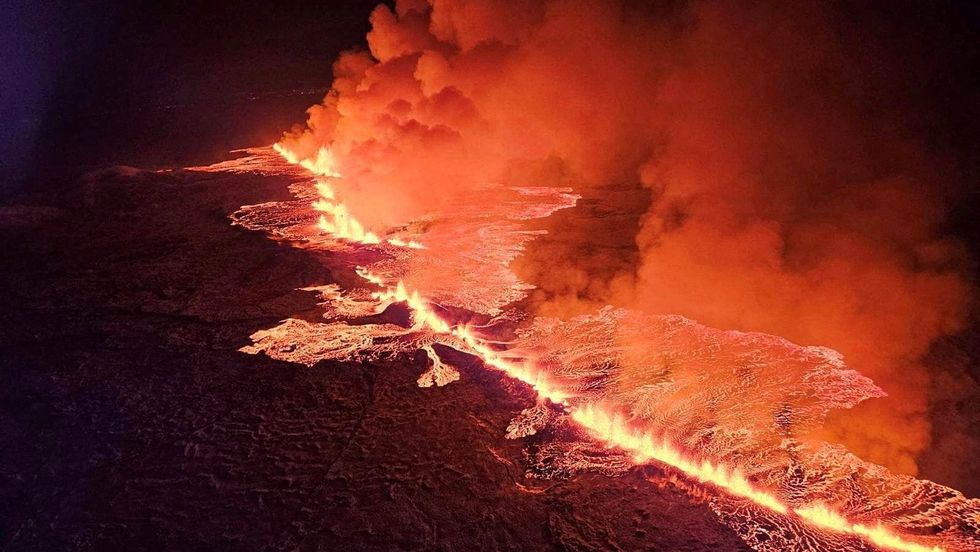 Iceland volcano erupts and spews huge amounts of lava after weeks of earthquakesREUTERS
Iceland volcano erupts and spews huge amounts of lava after weeks of earthquakesREUTERSImages and livestreams of the eruption show molten rock spewing spectacularly from fissures in the ground, their bright yellow and orange colours set in sharp contrast against the dark night sky.
“Seismic activity together with measurements from GPS devices indicate that the magma is moving to the southwest and the eruption may continue in the direction of Grindavik,” the Met Office said.
The crack in the earth's surface was around 3.5 km long and had grown rapidly, it added.
Some 100 to 200 cubic metres (3,530 to 7,060 cubic feet) of lava emerged per second, several times more than in previous eruptions in the area.
LATEST DEVELOPMENTS:WATCH HERE: Nathan Rao explains latest on Iceland volcanic eruption
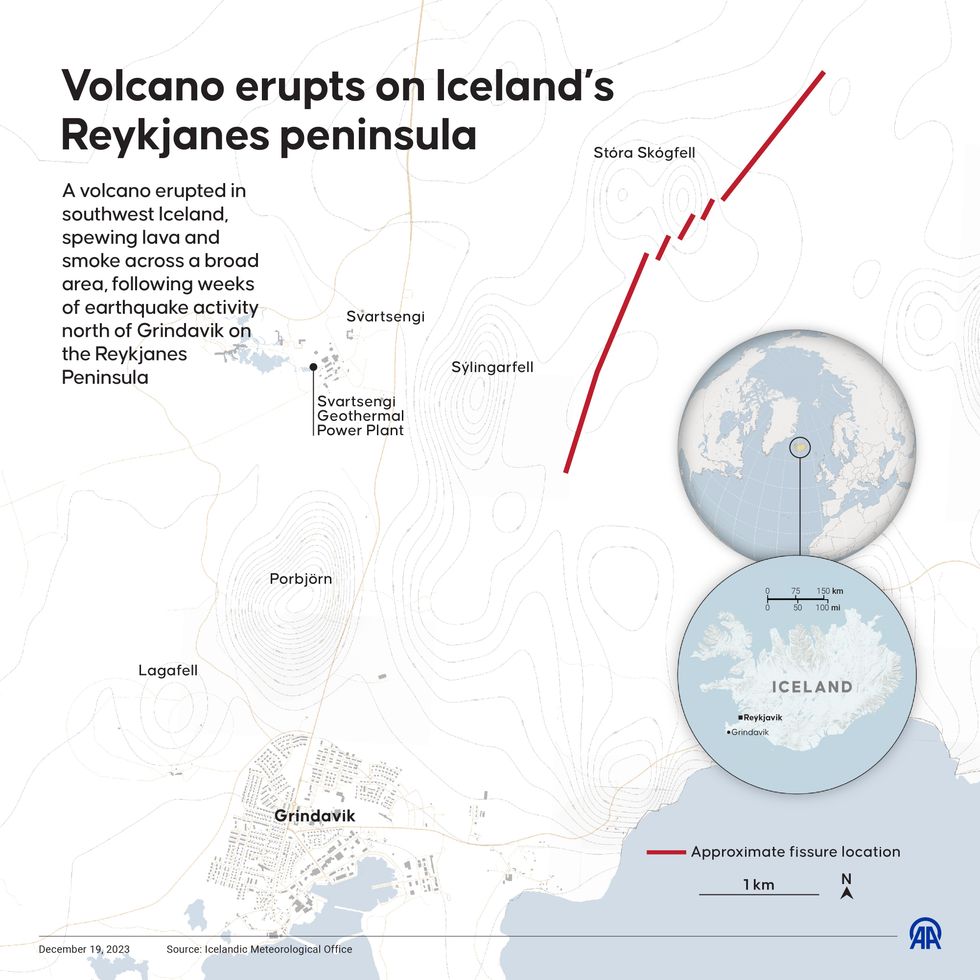
Iceland eruption mapped
Getty Images
Local police said they had raised their alert level as a result of the outbreak and the country's civil defence warned the public not to approach the area while emergency personnel assessed the situation.
The Icelandic government has said the volcanic eruption “does not present a threat to life”, as experts suggested that Grindavík could be spared as the lava appears to be flowing away from the town.
“The eruption is taking place north of the watershed, so lava does not flow towards Grindavík,” the geologist Bbjorn Oddson told public broadcaster RUV.
However, Halldor Geirson, an associate professor at the Institute of Earth Sciences at the University of Iceland, said Grindavik is still at risk of danger to life.
Prof Geirson said the location of the eruption means most of the lava is currently flowing into an area where there is little infrastructure.
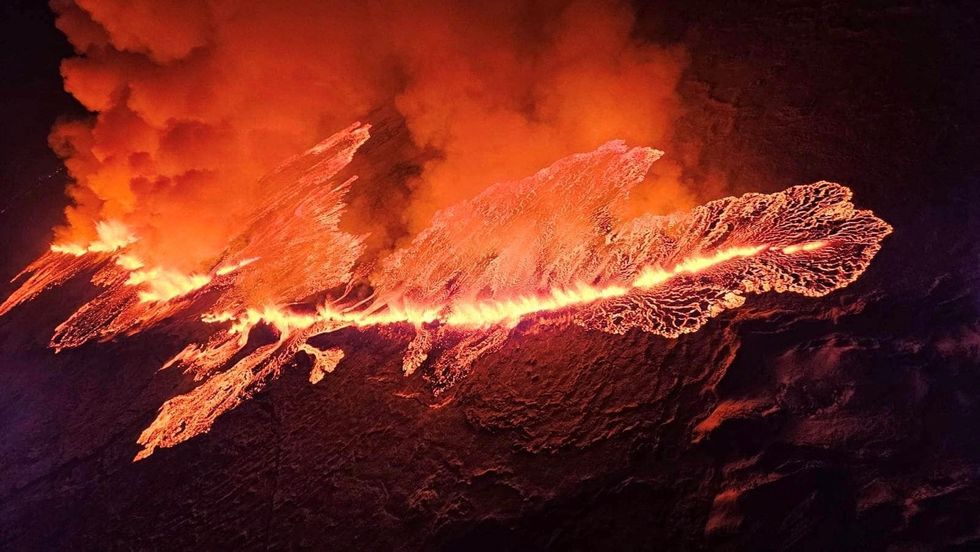
Iceland volcano erupts
REUTERS
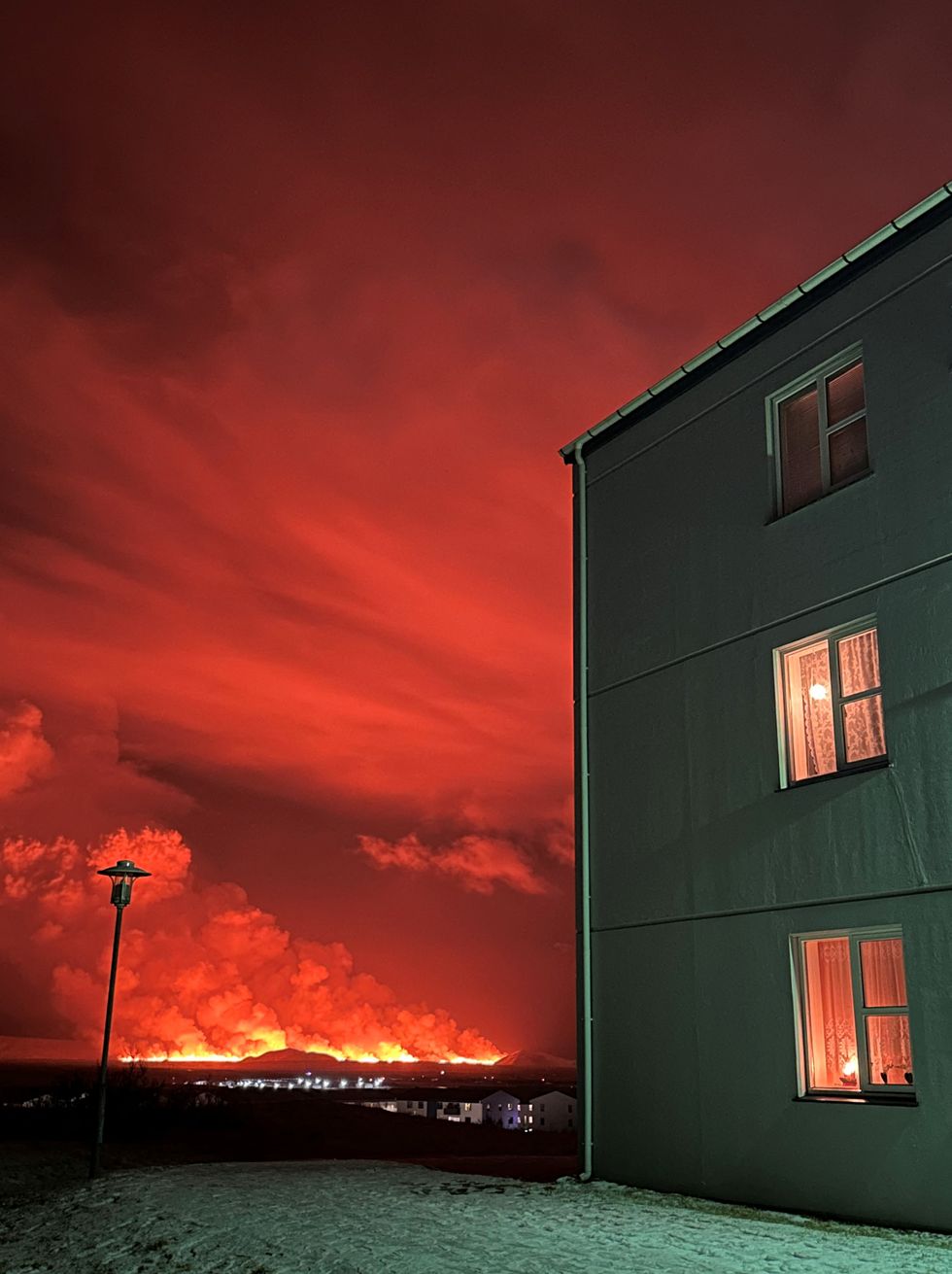
Fire erupts at Keflavik
REUTERS
Located between the Eurasian and the North American tectonic plates, among the largest on the planet, Iceland is a seismic and volcanic hot spot as the two plates move in opposite directions.
But eruptions are still hard to predict. In mid-November, Grindavik inhabitants were whisked from their homes in the middle of the night as the ground shook, roads cracked and buildings suffered structural damage.
Seismologists believed at the time an eruption was imminent, but the geological activity later eased.
The Reykjanes peninsula in recent years saw several eruptions in unpopulated areas.
In March 2021, lava fountains erupted from a fissure in the ground measuring between 500 to 750 metres (1,640 to 2,460 feet) long in the region's Fagradalsfjall volcanic system.
Volcanic activity in the area continued for six months that year, prompting thousands of Icelanders and tourists to visit the scene. In August 2022, a three-week eruption happened in the same area, followed by another in July of this year.
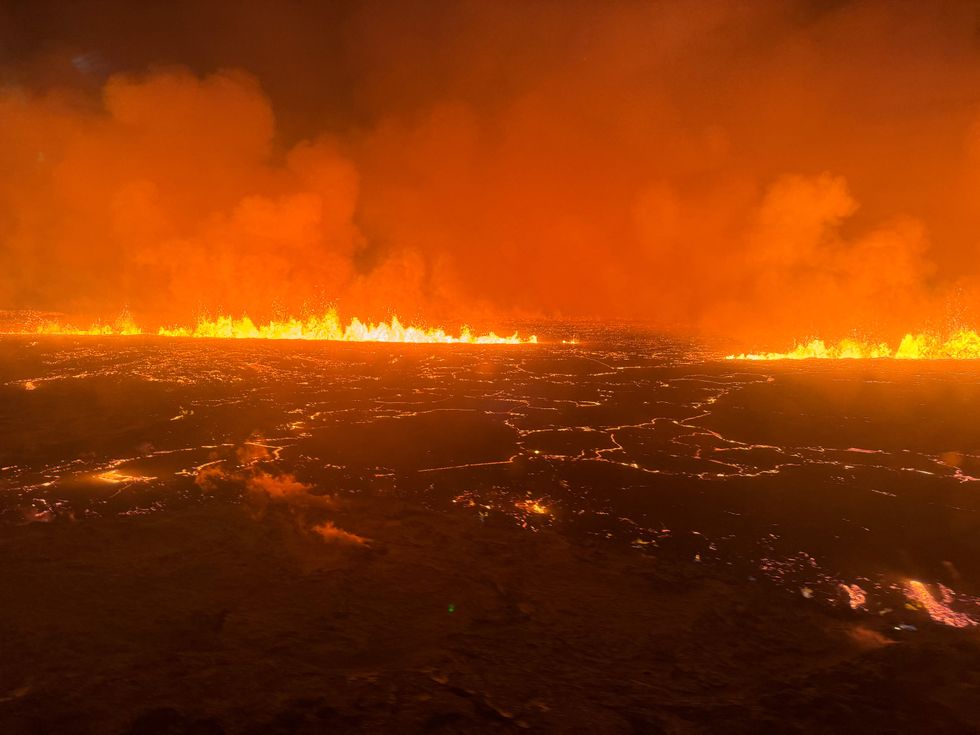
Wall of fire as lava spews from Iceland volcano
REUTERS
Hallgrímur Indriðason, a journalist from Icelandic state broadcaster RUV, provided insight from the ground in Iceland, claiming there was “no threat to air traffic - at least not for now”.
Reykjavik's international Keflavik airport has remained open today.
Indriðason told the BBC: “The 2010 eruption was different because it erupted under a glacier and when this happens you get this huge explosive ash high up in the air which is very fine and stays up in the air for a long time.
“This is much different. This is a crack [in the ground] with lava flow and the ash doesn't stay up in the air as much than in previous cases.
“So unless we had an eruption under the sea - which there is a slim chance of - then there will no impact on air traffic.”
In a statement, the Icelandic government said: “The eruption does not present a threat to life.
“There are no disruptions to flights to and from Iceland and international flight corridors remain open.”
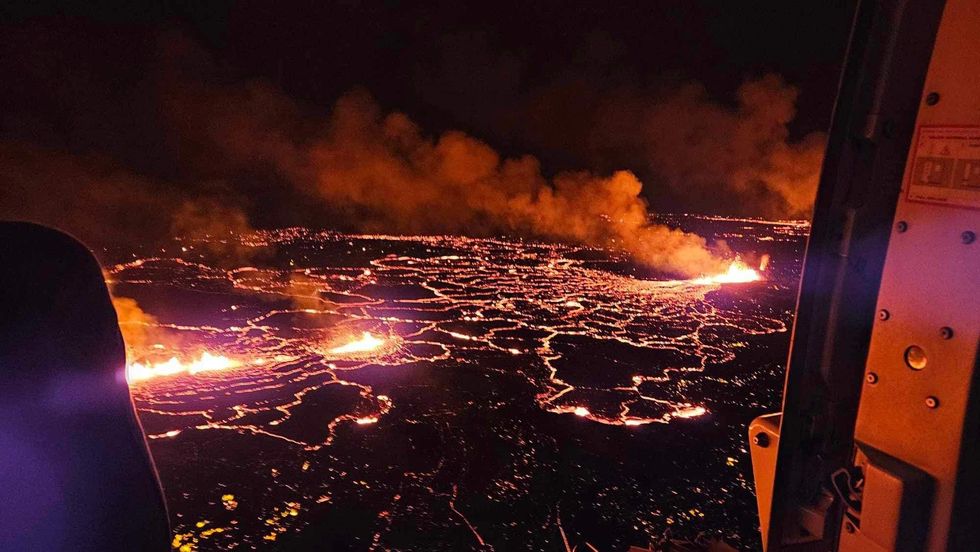
Aerial view of eruption from helicopter
Getty Images
Volcanologist Porvaldur Póroarson told Icelandic newspaper MBL that this latest eruption was a “different creature” than previous eruptions.
He also warned that the rate of sulphur dioxide being pumped into the air is much greater than in previous years.
“This is a different creature than we have seen in Fagradalsfjall.”
Speaking on the force of the eruption, Nicola Maxey, a spokesperson for the UK Met Office, said: “An effusive eruption started a few km NE of Grindavík near Hagafell just after 10pm last night.
“This eruption is an effusive eruption, i.e. mainly lava and gas, and that there is no volcanic ash.
“At this time there is no impact on aviation. Vigorous lava fountains are clearly visible from cameras and radar images, while they reach around 500m in height they do not contain any ash.”
Issuing an update on the decreasing intensity of the eruption, the Icelandic Met Office said: “The fact that the activity is decreasing already is not an indication of how long the eruption will last, but rather that the eruption is reaching a state of equilibrium.”









